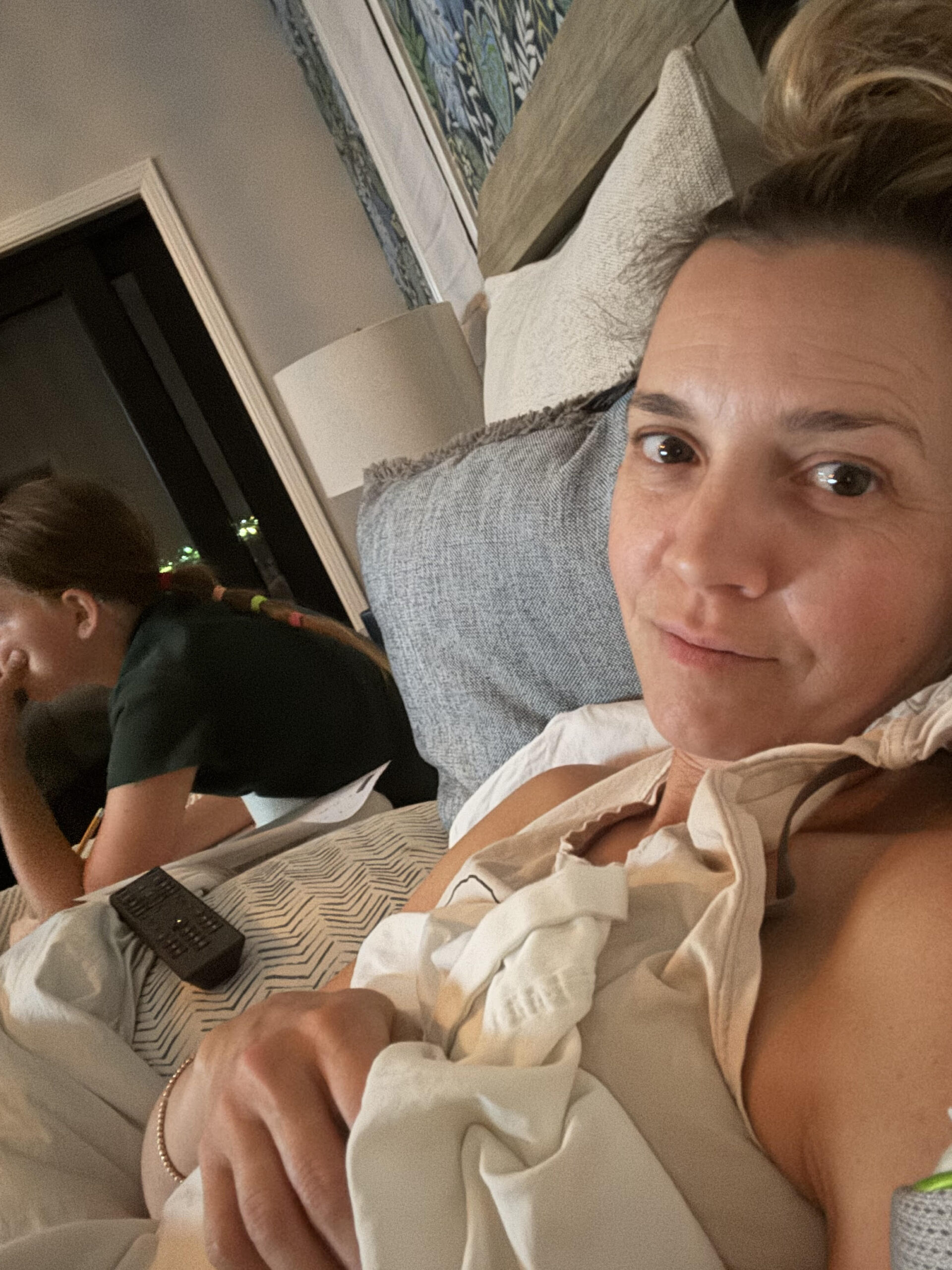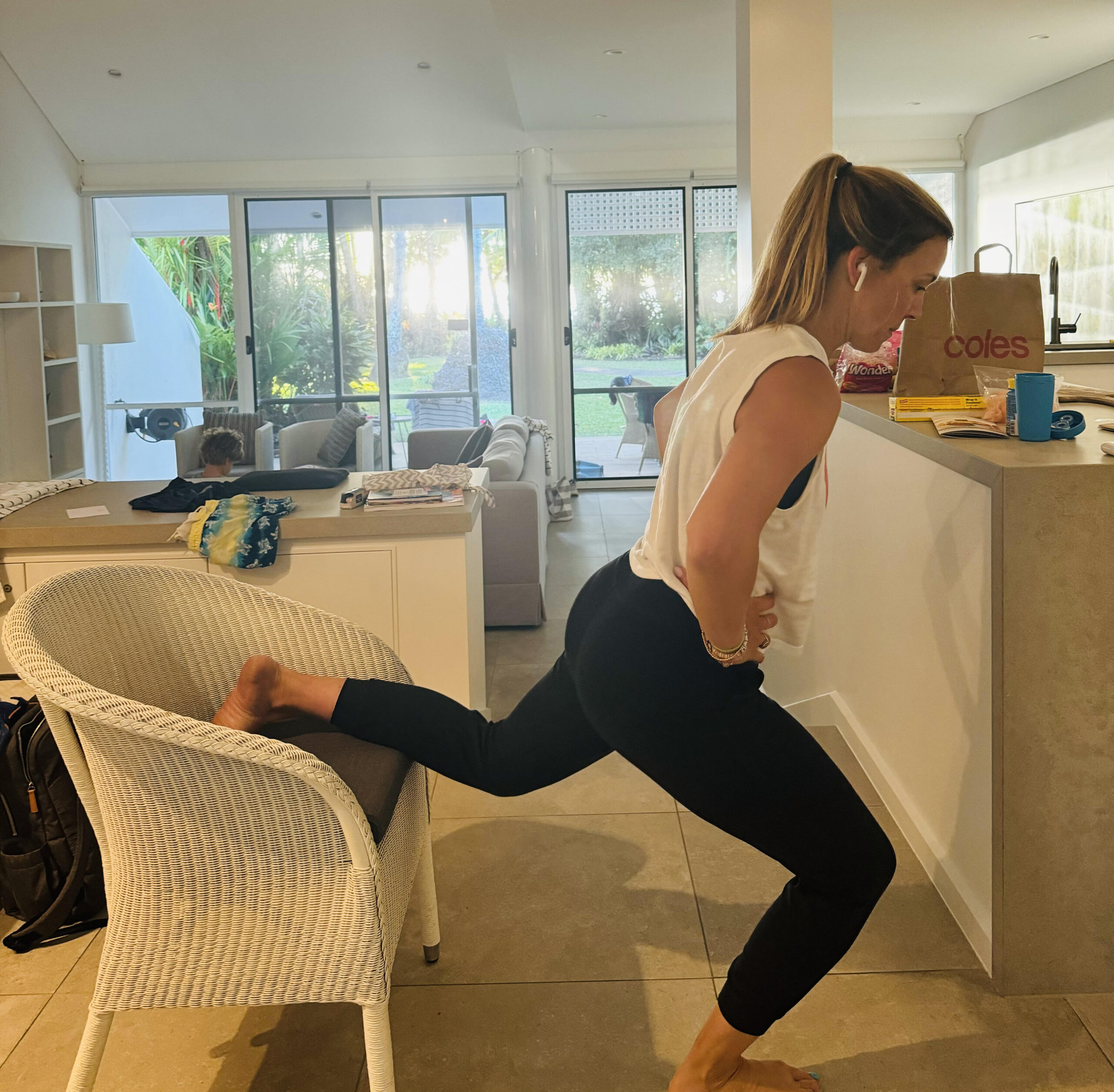Best Holiday Gifts for Busy Moms: MomShine's Curated List 2024
The holiday season is upon us, and if you’re searching for thoughtful, practical, and inspiring gifts for busy moms, you’re in the right place. Here’s our list of favorites to make her life brighter, more organized, and filled with joy.
1. Artkive Art Books for Kids
Busy moms will love this solution for preserving their kids’ artwork in a stylish, clutter-free way. Artkive turns those cherished pieces into beautiful, professional-quality books. It’s a gift that moms and kids can treasure for years.
✨ Special Offer: Use code Momshine at checkout for $20 off your purchase.

2. NectarLife Bath Essentials
Pampering doesn’t get better than this! NectarLife offers all-natural skincare products that leave you glowing and refreshed. Their line helps with sleep, reduces dark circles and sunspots, and promotes overall well-being.
My top picks are the whipped soap, exfoliating hand wash, and elite eye crème —a must-have for moms on the go! Even my daughters love using these products.
✨ Special Offer: Use code Momshine20 for 20% off.

3. Badesofa Bath Comfort
Transform bath time into a luxury spa experience with Badesofa bath pillows. These ultra-comfortable pillows make baths more relaxing, and their loungers for the pool and sauna are equally amazing.
🎁 Pro Tip: They’re offering 30% off right now—but act fast, as they sell out before Black Friday every year.

4. Little Rad Things: Style for Your Kids
For moms who love dressing their kids in fun, stylish outfits, Little Rad Things is a dream come true. Based in North Carolina, they offer trendy kids’ clothing like checkered jogger pants and the versatile waterproof letterman jacket perfect for boys and girls.
✨ Special Offer: Use code Momshine30 for 30% off at https://littleradthings.com.

5. TAJA Collection: Personalized Candles
Looking for a deeply personal gift? TAJA’s customizable candles are perfect. Add a photo, a heartfelt message, or even your wedding vows. Their all-natural scents are incredible, and these candles make memorable gifts for any occasion.
We had TAJA founder Annabelle De Grazio on the podcast, and her creativity and passion for gift-giving genuinely shine.
🎁 Shop Now: Visit https://tajacollection.com to create a meaningful gift for someone special.

Whether you’re looking to pamper yourself or find the perfect gift for a busy mom, these handpicked items will bring a little extra shine to the holidays.
Happy gifting!
The MomShine Team
Ultimate Guide: Legit Work-From-Home Jobs for Moms
The Current Remote Job Landscape for Moms
Many moms seek flexible, legitimate work-from-home opportunities in today's challenging job market. But with the largest white-collar recession underway, it’s harder than ever to stand out, let alone find jobs that truly work with the everyday juggle of everything else. Applying to jobs online only works about 1% of the time, so a more strategic approach is needed. Here’s a step-by-step guide to getting noticed, networking effectively, and opening doors to new remote work opportunities.
5 Proven Strategies to Land Remote Work for Moms
1. Strategy #1: Network Building
Building and maintaining a network is vital, especially in a remote work environment. It’s not just about quantity; it’s about quality and making meaningful connections. Right now, hiring managers prefer referrals because they come with built-in credibility. It saves them time and allows for evidence-based hiring. Highlighting why you’d be an asset to the team makes it easier for your contact to vouch for you.
2. Strategy #2: Strategically Job Search
In a competitive job market, simply applying isn’t enough. Studies show that job applications alone have a slim success rate. What works instead? As mentioned in #1 - Referrals! Your network can be the key to landing a job, so reaching out and making personal connections is crucial.
- Do Your Homework: Research the company and familiarize yourself with its mission, values, and products. Hiring managers are far more likely to notice candidates who show genuine interest.
- Personalize Your Approach: Start your outreach by discussing your connection—whether it’s a mutual friend, an industry event, or something specific that ties you to the company.
- Show Enthusiasm for the Company: Once you’ve established the connection, share what excites you about the company. Good hires attract other good hires, so make a compelling case for why you’re a strong fit and how you could contribute.
3. Strategy #3: Video Market Yourself
With so many applicants, it’s hard to stand out through a resume alone. Using tools like the McCoy App can be a game-changer. This platform lets you share video introductions, showcasing your personality, professionalism, and enthusiasm.
- Record a Short Intro Video: Use the app to share why you’re excited about the role, what makes you a strong fit, and why this company aligns with your goals.
- Instant Notifications: The McCoy app notifies you when someone views your video, giving you insight into the hiring process and showing interest in real time.
- Get a Head Start: Video lets you skip the initial “getting-to-know-you” phase and show off your strengths immediately, which is increasingly appealing to hiring managers.
4. Strategy #4: Join Project-Based Job Communities
If finding a full-time role has been challenging, project-based work is a fantastic option to gain experience and get your foot in the door.
- Explore Catalant: This high-level platform matches professionals with short-term projects, letting you build skills and expand your resume without committing to a full-time role.
- Look into #WorkSchoolHours and 5-Hour Club: Companies like the UK-based 5-Hour Jobs cater specifically to moms, offering roles that fit around school schedules. The #WorkSchoolHours movement, led by Ellen Joan Ford, is dedicated to helping parents find flexible roles that respect family time.
5. Strategy #5: Consider Entrepreneurship
Although we’ve been taught that being an employee is the safer financial path, a 2022 JP Morgan report says that the median self-employed household has a net worth more than four times greater than the median worker. Counterintuitively, launching a business can yield greater financial stability than working for an employer. But many are still scared to start their own thing or capitalize on a great idea. One fact that inspires me is that females own 44% of today’s businesses and that women-led businesses employ 9.4M workers and generate $1.9T in revenues annually.
You can also get a piece of this pie with your next great idea! Don’t be scared to monetize your next great idea and carve a profitable career path on a road that might seem scary. Whether it’s launching a small online store, offering freelance services, or turning a hobby into income, start by setting aside a little time each day to plan and research your idea. Tap into resources like free online courses, local small business groups, or even micro-grants available to women entrepreneurs to help you get started with confidence. Then, you truly have the flexibility to work whenever or however you want.
Finding Legit Work-From-Home Jobs for Moms
Finding legitimate, flexible work-from-home opportunities may require more creativity and networking in today’s market, but these strategies can give you an edge. Start with your network, make it personal, consider video to stand out, and look for project-based work as a way to build experience. We love following career coaches like JT O’Donnell at Work It Daily (on Instagram @j.t.odonnell, TikTok, and LinkedIn), where we found many of these tips for inspiration. With the right approach, you can navigate the competitive landscape and find a role that fits your life and goals. Our latest episodes on harnessing your superpowers, lighting a new path, and persevering should help spark new ideas, too.
7-Day Meal Plan for a Family of 5
The holiday season is hectic enough without the added stress of planning meals! Here’s a meal plan for the week full of family-friendly, easy-to-prep dishes that’ll keep everyone fed and happy, giving you more time to focus on what really matters. Each day has a recipe that allows you to tweak the ingredients and involves easy prep—because the holidays should be full of joy, not kitchen stress!
Ingredients to purchase for a sample weekly meal plan:
- Meats: Ground meat of your choice, salmon, chicken, sausage
- Fruits + Veggies: Lemon, garlic, onion, bell peppers, walnuts, spinach, and other veggies to cook that your family loves! Add fruits of your choice, too.
- Other: Shredded cheese, flour tortillas, polenta roll, quinoa, tomato sauce, chipotle or cilantro dressing, drinks your family enjoys
A Week of Home-Cooked Meals for a Family of 5
- Day 1 Italian Enchiladas—A comforting classic favorite in my family. Simply cook the ground meat, season, and add your favorite veggies. My husband and I enjoy spinach and mushrooms in these, and my kids prefer their veggies on the side. Then roll it up, top it with tomato sauce and cheese, and cook in the oven at 350 for 20 minutes.
- Day 2 Sheet-pan Lemon Garlic Salmon and Veggies—Easy cleanup and packed with nutrients to fuel your busy day. I always fully wrap my salmon in foil with oil and seasoning, and it’s a 20-minute cook at 375 degrees. [Check out this video for inspiration!]
- Day 3 Holiday Stuffed Peppers—Bell peppers filled with seasoned ground turkey, veggies, cheese, and rice are always a hit in my house! [Check out the easy recipe here].
- Day 4 Chicken Parmesan with a Side Salad—A kid-approved, Italian-inspired dish that feels like a treat. My kids like the breaded chicken, and then we bake it with cheese and sauce for us. [This recipe on Sunbasket we love and has everything you need to add to a yummy spinach walnut side salad. Broccoli pairs nicely, too.]
- Day 5 Veggie-Packed Stir Fry—Whip up a quick stir fry with colorful veggies, your choice of protein or TOFU, and a simple soy-garlic sauce. Sometimes, I add easy rotisserie protein for my hubby, me, and chicken dinos to get some protein in my kiddos.
- Day 6 Grain Bowl Night—Lena’s Kitchen has some great inspiration, including incorporating a delicious chipotle sauce. We love the cilantro dressing from Trader Joe’s on ours!
- Day 7 Sausage & Polenta Night—We love this household recipe because it’s easy any night of the week. You cut the polenta roll and cook it to your liking on a skillet. In a saute pan, cook the sausage, sauce, and bell peppers for 10-15 minutes. Bon Appetit!
Creating a 7-Day Meal Plan That Works For You
Creating the right meal plan ultimately means factoring in things that everyone will like and are easy to make in a time crunch. My kids love anything, such as BBQ or fried and ready-made pizza nights, but the goal is constantly building health around what they'll eat, ensuring the right veggie, grain, and fruit mixes are around that meal. For breakfasts, I’m big on egg bites, overnight oats, donut holes in the air-fryer (*where you control the sugar), yogurt, and muffins for the kids. Take the stress out of your week with this simple plan handy, and feel free to mix and match dishes to suit your schedule. For more inspiration on healthy meals for kids, listen to our episode with Dr. Kumi Nagamoto on How Food Influences Your Mood.
Top Family Adventures in Texas: From BBQ Feasts to Festive Getaways!
Everything’s bigger in Texas – including the family fun! Whether you're after tasty BBQ, spirited hoe-downs, or cozy holiday lights, Texas has something for every age to enjoy. Here’s your guide to some of the Lone Star State’s best family-friendly stops, from tasty eats at the Salt Lick to unforgettable holiday lights at Omni Barton Creek.
Family Vacation Destinations in Texas
1. Get a Taste of Texas at The Salt Lick BBQ
Kick off your Texas adventure at the legendary Salt Lick BBQ in Driftwood, just outside Austin. Known for its world-famous pit BBQ, the Salt Lick is a must-visit for any family trip to Texas. The outdoor seating, live music, and beautiful Hill Country setting make it a perfect spot to sit back and relax with a delicious BBQ. Kids will love watching the pitmasters work the open-fire pits, and parents can enjoy a glass of local Texas wine or craft beer. It’s an experience that will leave everyone smiling (and full)!
2. Dance the Night Away at a Texas Hoe-Down
A Texas trip wouldn’t be complete without a little two-stepping! Round up the family and head to a local ranch or one of the many family-friendly dance halls. Places like Gruene Hall in New Braunfels, Texas’s oldest dance hall, offer live music, dance floors, and a welcoming atmosphere for all ages. Many places host family nights with live country music where you can learn some simple steps and line dances. It's a fantastic way to introduce the kids to Texas culture, with memories (and laughs) guaranteed!
3. Stay and Play at Hyatt Regency Lost Pines
Looking for a hotel with all the family-friendly amenities you could dream of? Hyatt Regency Lost Pines Resort & Spa, nestled along the banks of the Lower Colorado River, offers a true Texas escape. Kids can zip down the Crooked River Water Park waterslide, try horseback riding, or explore scenic nature trails. There’s even a kids’ camp to give parents a little break! The whole family will have a blast with activities like movie nights and s’mores by the fire pit. Plus, the on-site dining has something for everyone, from local Texas fare to family-friendly favorites.
4. Experience “Lights and Delights” at Omni Barton Creek Resort
For a magical holiday treat, head to the Omni Barton Creek Resort & Spa in Austin, where the “Lights and Delights” event transforms the hotel into a winter wonderland. From dazzling light displays to family-friendly holiday activities, Barton Creek is a top holiday destination for Texas families. The resort’s hilltop setting is stunning, and families can enjoy holiday workshops, kid-friendly movie nights, and plenty of photo ops with Santa. It's the perfect holiday escape that brings warmth and excitement to all.
5. Go Wild at the Capital of Texas Zoo in Cedar Creek
Just 20 minutes from Austin, the Capital of Texas Zoo is home to a mix of native and exotic animals, including lemurs, sloths, and big cats. It’s a smaller, family-friendly zoo where visitors can feed certain animals and enjoy closer interactions.
6. Discover the Wonder of Texas Hill Country Wineries
While Texas is known for its BBQ and cowboy culture, did you know it’s also home to a thriving wine scene? Many Hill Country wineries have family-friendly grounds where kids can run around while parents sip some award-winning Texas wines. Becker Vineyards and Grape Creek Vineyards are beautiful spots to relax, enjoy the scenery, and even enjoy a picnic.
Many wineries also offer juice tastings for kids so they can feel part of the fun! This post is amazing. It shows how to map out the perfect day trip with your family, including a trip to the Salt Lick Cellars, which completes an epic journey to Austin.
How to Make the Most of Your Family Vacation to Austin, Texas!
With so much to see and do, Texas is the ultimate destination for families looking to make special memories. From toe-tapping hoe-downs to festive lights and wild adventures, the Lone Star State is brimming with unforgettable experiences. So pack your boots, bring your appetite, and get ready for a Texas family vacation like no other!
For more tips on easy family travel, listen to my interview with Kristina Watkins of KW Lux Travel. Kristina can help your family with awesome perks at the mentioned hotels. Reach out to learn more!
Teen Slang Dictionary 2024: 14 Popular Words Parents Need to Know
Let’s face it—keeping up with teen slang can feel like a full-time job! I love dropping new lingo to remind my kids that I’m still “cool” and in the know. So, here’s a quick guide to some trending slang to help you stay in the loop (and maybe even surprise your kids with your “cool” factor).
4 Social Media-Inspired Terms
1. Eating
Meaning: Slaying it, doing a fantastic job, or looking incredible.
Example: “Did you see her on stage? She was eating!”
2. Rizz
Meaning: Short for charisma. It describes someone’s charm, smoothness, or ability to attract others.
Example: “That guy’s got major rizz!”
3. No Cap
Meaning: Saying something that’s totally true or serious (opposite of “cap,” which means lying).
Example: "She’s the best player on the team, no cap!"
4. Ratio
Meaning: Usually used online, it’s when someone’s reply gets more likes or engagement than the original post, indicating people agree more with the reply.
Example: "That comment was so wrong, he got totally ratioed."
5 Trending Expression Terms
5. Sigma
Meaning: Originally used for people who go against the grain and think independently (like a “lone wolf”). Now, it’s also being used to react to things that seem baffling or unexpected, like saying, “What the hell?”
Example: “He did what? What the sigma…”
6. Suss
Meaning: Suspicious or sketchy, often used to describe someone or something that seems off.
Example: “He was acting really suss at the party.”
7. Sussy-Bacca
Meaning: Combines “sussy” (suspicious) and “Bacca” (from Chewbacca, the character known for his loyalty but also funny, wild side). Used to describe someone acting strangely or suspiciously.
Example: “Don’t trust him—he’s a total sussy-bacca.”
8. Skipity Ohio
Meaning: This one’s a bit of an inside joke on the internet. “Ohio” has become a meme representing strange or weird happenings. "Skipity Ohio" is a fun way of saying something is off, unusual, or just not it.
Example: “That dance move was kinda… skipity Ohio.”
9. Bet
Meaning: Used to agree or confirm something. It’s like saying “okay” or “for sure.”
Example: "Can you pick me up later?" – "Bet!"
Style and Entertainment Slang
10. Mid
Meaning: Something that’s average or underwhelming, not great.
Example: "That movie was kinda mid, not worth the hype."
11. Bussin
Meaning: Used to describe something really good, especially with food or music.
Example: "This pizza is bussin’!"
12. Drip
Meaning: Refers to someone’s style, especially if they’re well-dressed or have impressive fashion.
Example: "Check out her outfit—she’s got drip."
13. Slaps
Meaning: Refers to something really good, especially in reference to music or food.
Example: "That new song slaps!"
14. Touch Grass
Meaning: A humorous way of telling someone to get off their phone or computer and go outside. Often used when someone is overreacting or taking something too seriously online.
Example: "You’re way too into that game. Go touch some grass!"
How to Use Teen Slang Naturally
Try these out when joking around with your kids or when you hear them in conversation. Who knows—you might get a few surprised looks or even an impressed reaction! We especially love the ones that encourage getting off devices to “touch grass.” And if you’re looking for ways to balance screen time in your family, check out our family-friendly device contract as a good conversation starter.
Simple Self-Care Practices for Busy Parents That Make a Big Difference
Let’s be real for a second: self-care can feel like a luxury. When you’re juggling diaper changes, homework help, and trying to keep up with the never-ending to-do list, taking a moment to breathe (let alone meditate) can seem laughably impossible. But here’s the thing: self-care doesn’t have to mean taking an entire day off or booking a retreat. In fact, even tiny shifts can make a huge difference. So, for all my busy parents out there, here are some quick, practical self-care practices that fit into your life.
Self-care ideas to make a part of your busy schedule
1. Morning Mindfulness: Starting the Day with You
You know that feeling when you wake up and immediately hit the ground running? Kids are asking for breakfast, and emails are piling up. It's the morning chaos. But what if you took just a few minutes for yourself before all that?
I’m talking about a simple morning ritual: deep breaths, a moment of quiet, and a quick check-in with you. A fantastic resource for this is the Nested Institute, which offers guided mindfulness practices perfect for busy parents. Think of it as a mini-meditation retreat from the comfort of your bed (or wherever you manage to carve out a corner of calm). Just five minutes to gather yourself, and boom—you're already winning the day.
2. Creative Outlets: Feed Your Soul
We tend to let our creative hobbies slide as adults, but it’s time to bring them back. Creative expression isn’t just for the kids’ arts-and-crafts hour—it’s for you, too! Whether it’s doodling, painting, or a bit of poetry, feeding your creative side can feel refreshingly therapeutic.
For a gentle, inspiring approach, check out Jenn Wert’s resources. Jenn’s programs and workshops encourage creativity and self-discovery, guiding you to tap into that inner spark. A little creativity goes a long way in keeping you grounded, so grab those colored pencils and let yourself play.
3. Mini Workouts That Pack a Punch
Hear me out: you don’t need an hour to get a good workout. In fact, a quick, high-energy 5-minute movement session can be exactly what your body and mind crave. Whether it’s a mini strength circuit or a burst of cardio, these “pocket workouts” can leave you feeling surprisingly refreshed (and no, you don’t have to change out of your pajamas!).
Lift Like a Mother has workout programs designed for moms looking to get strong and stay fit without a huge time commitment. These workouts are perfect for squeezing in some fitness between school drop-offs and snack prep. Five minutes? You’ve got that.
4. Introduce Low-Key Meditation and Visualization
Creativity flourishes in active play but also in moments of calm. In the evenings, I love practicing simple meditation techniques with my kids, like autogenics (a form of relaxation using calming phrases) and visualization. A wonderful resource to introduce this is Brain Vacation: A Guide to Meditation from the Big World of Little Dude series. This book helps young children playfully explore relaxation and focus techniques, making it easy for parents to engage their kids in mindfulness practices. Exercises like picturing peaceful scenes or visualizing success can help kids unlock the power of their minds, promoting calm and mental resilience when life gets tough. For more tools to support these practices, Big World of Little Dude offers additional resources for parents, making it easy to foster emotional well-being at home.
5. Capture the Moments: Journaling Your Journey
Have you ever had a million thoughts but zero time to process them? That’s where journaling comes in. Taking even a few minutes to jot down your thoughts, dreams, or even random musings can do wonders for clearing the mental clutter. For a journaling experience that feels both meaningful and manageable, Memorize Your Life offers a unique approach to documenting your journey. It’s all about capturing those precious moments and reflections in a way that feels natural. It’s not about filling pages—just capturing you, one small moment at a time.
6. Seek Connection and Support
Let’s face it: sometimes, the best self-care is knowing you’re not alone. There’s power in finding community—whether a quick text with a friend or a deeper connection with a group that understands what you’re going through. Enter Polina Todisco, whose workshops and groups offer support and community for parents seeking a little extra help along the way. These aren’t just parenting pep talks; they’re a chance to be heard, supported, and inspired by others in the same boat.
Final Thoughts: Parenting yourself with self-care for moms and dads
Self-care doesn’t have to be complicated or require hours of free time. Small, intentional moments—whether a quick workout, a soothing tea, or a supportive community—can help you feel recharged, connected, and ready to tackle anything that comes your way.
So here’s the challenge: pick one of these practices and try it out this week. Let it be simple. Let it fit into your day. And remember: taking care of you is taking care of everyone else, too. Because when you’re feeling good, you’re unstoppable!
This article was written by Cara Zelas in collaboration with World of Little Dude—Helping raise kind, confident, and emotionally healthy kids.
Living with Endometriosis: My Journey to Diagnosis
For years, I brushed off monthly discomfort, assuming it was just part of life as a woman. Doctors had conditioned me to accept it. I repeatedly sought help, saying my periods were unbearable, but the response was always, “That’s normal for a woman your age.”
However, after my third child and a renewed focus on my health, I started questioning if my pain was normal at all. Each month, I struggled with intense agony, needing excessive pain relief, and found myself thinking I’d rather endure childbirth again than experience what was happening every few weeks. This couldn’t be “normal.”
When the pain became constant and intolerable, it was finally time to dig deeper.
Understanding the Signs of Endometriosis
The Pain I Couldn’t Ignore
It started with painful periods, which I initially attributed to postpartum changes or even perimenopause. But as the pain worsened, I decided to try an IUD to manage it—a choice I quickly regretted. Within a few months, I felt torn apart from the inside, and my doctor recommended I wait a week for a sonogram. I declined and had the IUD removed immediately. Though the sonogram showed nothing, the pain subsided, leaving me frustrated and without answers for the agony I knew would return.
“It’s All in Your Head”
Months passed with no diagnosis, and the pain affected my marriage, mental health, and ability to parent. After a stressful home remodel, convinced I had an infection, I went back to my doctor. During a pelvic exam, the pain was so severe that my doctor ordered a hysterosonogram—a thorough but painful procedure. The test revealed a polyp, considered common for “women my age.”
When my doctor suggested removing the polyp and trying another IUD, I reached my breaking point. I was done with solutions that didn’t work. I needed a new approach.
That was when things shifted. After a closer examination, my doctor mentioned something unexpected—she suspected endometriosis.
Connecting the Dots
Endometriosis? I’d heard the term in passing but never thought it applied to me. I had three beautiful children, and my fertility had not been affected—unlike the common perception of endometriosis as a condition that impacts fertility.
Finally, I saw the renowned endometriosis specialist, Dr. Camran Nezhat, who is the inventor and pioneer of modern minimally invasive and robotic surgery, who told me, “This pain is not in your head.” For the first time, I felt hopeful. I took the free Nezhat Endometriosis Risk Advisor online endometriosis quiz and scored an 85–90% match. Dr. Nezhat confirmed that surgery was a favorable option, as it would help with my pain and address other health concerns.
Endometriosis Awareness
As we traveled through Australia before my surgery, I noticed endometriosis awareness campaigns everywhere. This is after an awareness campaign in March every year by www.Endomarch.org. I learned that doctors like Dr. Jason Abbott are helping elevate awareness about endometriosis there, reminding me that my pain wasn’t “normal.” Some of the statistics shared included:
- Endometriosis affects roughly 10% (190 million) of reproductive-age women and girls globally. (Source: WHO)
- Endometriosis affects 1.5 million women—a similar number to those affected by diabetes. (Source: UK.Org)
- Average diagnosis of endometriosis takes an average of 7 years (Source: University of York)
What Exactly Is Endometriosis?
Endometriosis is a chronic condition in which tissue similar to the lining of the uterus (but not actual endometrium) grows outside the uterus. This tissue can spread to the ovaries, fallopian tubes, outer surface of the uterus, and other areas like the abdominal cavity, bladder, or colon, leading to severe pain, inflammation, and scar tissue formation. Unlike typical uterine lining that sheds during menstruation, this tissue has no exit route, causing painful adhesions and cysts.
Dr. Nezhat explained that even minimal amounts of this tissue can cause significant pain and infertility, though the severity and symptoms vary widely among individuals.
Though there’s no cure for endometriosis, treatments like hormonal therapy, pain management, and surgery can help manage symptoms. Early diagnosis and intervention are essential for quality of life and fertility preservation.
Taking Action Against Endometriosis Later in Life
Scheduling surgery felt like reclaiming control over my health. The diagnosis brought relief, clarity, and empowerment. My surgery uncovered endometriosis on my colon, back, and bladder. Dr. Nezhat reassured me that my pain wasn’t “in my head.”
In addition to excising the endometriosis, my appendix and fallopian tubes were removed to reduce cancer risks. I also underwent an endometrial ablation to manage future pain and bleeding.
My Endometriosis Prognosis Now
This journey is ongoing. I’m learning what works best for my body and prioritizing my well-being. I’ll have annual check-ups to monitor my pain and symptoms. Endometriosis may have been an invisible struggle, but I won’t stay silent any longer. To any woman reading this: trust your body, advocate for your health, and don’t let anyone diminish your pain. You deserve answers and relief.
Resources for Support and Information
For anyone seeking more information or support, resources like EndoMarch and AGCES offer valuable insights on endometriosis and are committed to raising awareness and supporting those affected. Remember, even a minimal amount of endometriosis can cause pain and infertility, and no one should endure this alone.
4 Must-Visit Date Spots in Cabo for a Special Night Out
Recently, I had the pleasure of visiting Cabo, and while the sun, sea, and vibrant atmosphere were every bit as breathtaking as you'd expect, what truly stood out were the magical date spots that transformed the trip into something special. Whether you're planning a romantic escape, a special night out, or just looking to experience Cabo's culinary and scenic beauty, here are four spots you absolutely can't miss.
1. Sage Restaurant in Cabo
Sage feels like an oasis in the middle of San José del Cabo’s bustling streets. When you step inside, you're welcomed by a chic yet inviting ambiance. The decor blends rustic and modern with earthy tones, soft lighting, and lush greenery, making the space feel intimate and relaxed. It’s the perfect spot for a romantic date or a night out with friends. The open-air design allows you to enjoy the cool evening breeze, enhancing the overall atmosphere of calm and relaxation.
The Menu: Baja Flavors with a Global Twist
At the heart of Sage’s appeal is its innovative menu, which elevates local Baja ingredients with international techniques. The dishes are a true reflection of the land and sea surrounding San José del Cabo. Think fresh, sustainable seafood, locally sourced produce, and bold flavors that pay homage to traditional Mexican cuisine while introducing international flair.
A few must-try dishes:
- Wood-grilled Octopus: This dish combines tender, perfectly charred octopus with a light citrus glaze, balancing smokiness with bright acidity.
- Baja Sea Bass: Fresh from the waters of Cabo, this sea bass is seared to perfection and served with seasonal vegetables.
- Lobster Risotto: Creamy, decadent, and full of rich flavors, this dish showcases the best of Baja's lobster harvest.
The cocktails are also worth a mention, especially their signature mezcal-based drinks that are refreshing and perfectly complement the flavors of the food. Whether you go for a classic margarita or something more adventurous, you won’t be disappointed.
2. Arbol Date Night in Cabo
Arbol is the spot for a date night that dazzles all the senses. Nestled within the lush grounds of Las Ventanas al Paraíso, this restaurant is all about opulence. When you walk in, you're greeted by the glow of tree-like installations, creating a magical atmosphere. The Asian-inspired menu offers everything from sushi to tandoor-style dishes, but the real showstopper here is the seafood. We indulged in their whole roasted sea bass, which was nothing short of divine. The vibe here is chic and upscale, making it ideal for couples who want a glamorous night out.
If you're looking for a hidden spot in Cabo to enjoy an evening of exceptional cocktails and a dash of mystery, look no further than the Speakeasy at Rosewood Las Ventanas al Paraíso. Tucked away in one of the most luxurious resorts in Cabo, this clandestine cocktail lounge offers an intimate, old-world experience that feels like stepping into a bygone era of glamour and intrigue.
The moment you enter the Speakeasy, you're transported to the Prohibition era, when these hidden bars were all about secrecy, exclusivity, and indulgence. The dim lighting, vintage decor, and low, smooth jazz playing in the background create an atmosphere as seductive as it is sophisticated. With plush seating, dark wood furnishings, and an intimate layout, it feels like a private retreat, perfect for a romantic date or a quiet night with friends.
3. The Amazing Acre Restaurant Experience in Cabo
Acre is more than just a restaurant—it's an experience. Tucked away in a lush palm forest, this spot offers a farm-to-table dining experience. The setting is idyllic, with open-air seating that immerses you in nature. The dishes here are fresh, vibrant, and locally sourced, focusing on sustainable farming. Their pork belly tacos are a must-try, paired perfectly with one of their inventive cocktails. After dinner, stroll around the property and explore their animal sanctuary, or even stay in one of their chic treehouses for the night. This place feels like an escape within an escape!
4. The Cabo Surf Hotel for a Laid-Back Experience
Cabo Surf Hotel has everything if you're looking for a laid-back, beachy vibe. Located right on the beach, this spot exudes casual elegance. Whether you’re surfing by day or simply relaxing by the waves, it's the perfect place for a sunset dinner. Seas, their beachfront restaurant, offers delicious seafood and Mexican fare with a laid-back vibe that’s perfect after a day in the sun. Watching the waves crash while enjoying the day's catch is pure bliss. Plus, they have live music on some nights, adding to the romantic, relaxed atmosphere.
Final Thoughts on a Lovely Date Night in Cabo
Cabo is a destination that offers so much more than just beautiful beaches. Each of these spots brings its own unique charm, from the luxe ambiance of Sage and Arbol to the earthy escape of Acre and the beachside charm of Cabo Surf Hotel. Whether you're planning a romantic trip or just want to treat yourselves to something special, these date spots will make your next Cabo getaway unforgettable!
Check out a recent episode where we talk all about travel tips, from packing to how to book the best hotel room!
20-Min On-the-Go Busy Mom Workout: My Favorite Moves to Stay Lean and Strong
Finding time to squeeze in a workout can feel like a luxury for a busy mom. Between juggling work, family, and everything in between, carving out even 20 minutes for myself is a challenge—but it's a priority I make for my health and sanity. Over time, I’ve discovered a few favorite exercises that can be done anywhere, whether I’m at home or on the go. These moves are quick, efficient, and perfect for keeping lean and strong, even with a packed schedule.
My Workout For Busy Moms
Here’s my go-to 20-minute workout, combining strength, cardio, and core for a full-body burn that doesn’t require much equipment or space. All you need is yourself, a set of sliders (or towels!), and a resistance band for added intensity.
At-Home Workout For Moms
Warm-Up for Busy Mom Workout Routine (2-3 Minutes)
It's important to get your muscles warm and ready for action before diving in. Start with a light cardio warm-up to get the blood flowing.
- Jumping Jacks or High Knees for 1 minute: I have a mini-trampoline that makes a warm-up so fun and easy
- Arm Circles (both forward and backward) for 30 seconds
- Hip Circles and Torso Twists for mobility, 30 seconds each
Core Burn for Mom Workouts (4 Minutes)
Kick off with some core-focused moves to fire up your abs.
1. Bicycle Crunches – 1 Minute
Lie on your back with hands behind your head. Alternate bringing opposite elbow to knee, extending the other leg straight. Focus on keeping your core tight and back flat on the ground.
2. Alternating Scissor Leg Crunches – 1 Minute
Stay on your back and raise both legs straight up. Lower one leg down toward the floor while reaching your opposite hand toward the lifted leg. Alternate sides for a deep core burn.
3. Oblique Dips – 1 Minute (30 seconds per side)
Get into a side plank position with one forearm on the ground and your feet stacked. Lower your hips toward the ground and raise them back up, targeting your obliques. Switch sides halfway through.
4. Glute Bridge March – 1 Minute
Lie on your back with your feet planted on the ground, hip-width apart. Press through your heels to lift your hips into a bridge. Alternate lifting one knee at a time toward your chest while keeping your hips stable.
Busy Mom Workout Lower Body Blast (6 Minutes)
Next, we hit the legs with exercises that build strength and tone while also getting the heart rate up.
5. Squat Jumps – 1 Minute
Stand with feet shoulder-width apart. Lower into a squat and then explode upward into a jump, landing softly back into a squat. This plyometric move gets your legs burning and adds a cardio burst. I typically try to get to 20 reps if I can.
6. Crab Walks – 1 Minute
Get into a squat position and stay low. Step to the side with one leg, then follow with the other leg. I like using an elastic band on my thigh to add resistance while I do these and do 15-20 steps per side.
7. Bulgarian Split Squats – 1 Minute (30 seconds per leg)
Place one foot on a chair or elevated surface behind you, with your front foot firmly planted. Lower into a lunge, keeping your front knee behind your toes. This move works the quads, glutes, and hamstrings while improving balance.
8. Clam Shells (with band) – 1 Minute (30 seconds per side)
Lie on your side with your knees bent and a resistance band around your thighs. Keep your feet together as you open and close your top knee, squeezing your glutes with each rep. This move targets the hips and outer thighs and also works great with an elastic band on the thighs. I try to bring these and sliders for lunges on most trips I take.
9. Lunges (with sliders) – 2 Minutes
Stand with one foot on a slider (or a towel if you’re on a hard surface). Slide your foot backward into a reverse lunge and return to standing. This adds an element of stability and control to a traditional lunge, engaging more muscles.
Upper Body & Full Body Combo Exercise for Moms (4 Minutes)
We’ll work the arms and full body to balance things out with these moves.
10. Tri Dips – 1 Minute
Use a chair or low surface to perform triceps dips. Lower yourself by bending your elbows, keeping them close to your body, and press back up. This move targets the back of the arms.
11. Skaters – 1 Minute
Hop from side to side, landing on one leg and bringing the opposite foot behind you like a speed skater. This move works the legs and improves lateral strength while boosting your cardio.
12. Calf Raises – 1 Minute
Stand with feet hip-width apart. Raise up onto your toes, squeezing your calves at the top, and slowly lower down. This simple yet effective move builds calf strength and definition.
13. Single-Leg Box Squats – 1 Minute (30 seconds per leg)
Find a sturdy surface (like a chair or bench) and stand in front of it. Perform a single-leg squat by sitting back on the surface and then pushing back up to stand using only one leg. This move is great for the quads and glutes.
Busy Momma Cool Down (2-3 Minutes)
Finish your workout with a well-deserved cooldown and stretch.
- Hamstring Stretch: Stretch one leg forward, keeping it straight, and lean into the stretch to feel it in the back of your thigh.
- Quad Stretch: Pull one foot toward your glutes, keeping your knees together, and feel the stretch in your thigh.
- Cat-Cow Stretch: On your hands and knees, alternate between arching your back upward (cat) and dropping your belly down (cow) to stretch the spine and improve mobility.
Why I Love This Workout Routine for Moms
This workout is perfect for busy moms who want to stay lean, strong and energized. It packs a full-body workout into just 20 minutes and can be done anywhere—whether at home, in a hotel room, or at the park while the kids play.
By incorporating these efficient, effective exercises, you’ll feel the burn, build strength, and keep your fitness goals on track, no matter how busy life gets! I found this article on Women’s Health Mag to be so helpful and inspired some of these moves: 17 Butt Exercises At Home For Strong, Toned Glutes, Per Trainers.
Unlocking Longevity: How Our Ovaries—and Whales—Might Hold the Key to Longer, Healthier Lives
It’s been a drumbeat in the headlines lately: Menopause. Is it a moment or a movement? I’m not sure yet, but I do know that as a woman at 42, the research and options for most symptoms are abysmal. It impacts our quality of life, though longevity is all the craze. As I planned for another spin on the topic, our last menopause episode being the most popular in the past year of the launch of MomShine, I thought to myself: What are we missing in this natural process of life that hasn’t already been talked about?
As a woman in my 40s who has finally figured out how to abide by most well-being rules to feel your best (i.e., increasing activity levels, lowering stress, building muscle, minimizing toxins), was I still on a path to not feeling healthy? Could the key to longevity and a higher quality of life be in tandem and reside in an often-overlooked body part—our ovaries? New research suggests that the health of our ovaries not only governs our reproductive abilities but could also play a crucial role in how well we age. Imagine that. I hadn’t given my ovaries that much thought besides cursing them monthly and thanking them for my three beautiful angels.
But science is revealing that these organs are more than just the bearers of future generations. Emerging studies, such as one highlighted by the National Library of Medicine, show that reproductive factors, notably fertility and fecundity (*the ability to produce an abundance of offspring), are significantly associated with increased female lifespan. The concept is simple yet powerful: by understanding how our ovaries function and change as we age, we might be able to enhance our quality of life and longevity.
A Rare Mammalian Phenomenon: Menopause and Its Impact
Human females are part of a very exclusive group in the animal kingdom—one of the few species that experience menopause. Whales, especially the Bowhead whale, share this trait. These majestic mammals live upwards of 250 years, and research is pointing to their ovarian health as a significant factor in their extraordinary lifespan—maturing sexually at around 10 to 15 years of age and remaining reproductively active past 100 years of age.
What makes the Bowhead whale’s reproductive system so unique? It appears that they’ve evolved their ovaries to remain functional for a much longer portion of their lives compared to humans. In contrast, women lose most of their ovarian function by age 51, with the onset of menopause on average.
Could there be lessons in this for us? Dr. Deena Emera, an evolutionary geneticist, is leading groundbreaking research into how studying the ovaries of whales might offer insights into delaying menopause or maintaining ovarian function for longer quality of life in humans. Her work focuses on the Bowhead whale, which has found ways to sustain its ovaries. This finding has opened up a world of possibilities for advancing women’s health.
Extending Menopause: A New Horizon in Women’s Health
As scientists like Dr. Emera dive deeper into ovarian research, there is a growing movement in science to explore how delaying menopause might revolutionize women's health outcomes. Dr. David Sinclair, a Harvard professor of genetics, is pushing the boundaries of aging science. His research into epigenetic reprogramming—where cells are essentially "rebooted"—could pave the way for rejuvenating aging tissues, including ovaries. Dr. Sinclair and his team believe they can reverse aging by restoring lost cellular information.
This is exciting news for women everywhere, offering the promise of better health and more vibrant lives as we age. Not only could delaying menopause give women more flexibility with fertility, but it could also improve the quality of life by reducing age-related ailments. Initiatives like the Global Consortium for Reproductive Longevity and Equality are already funding research to make these breakthroughs a reality.
Why It Matters Now
Women have been suffering age-related illnesses at higher rates than their male counterparts. A few of those rising statistics that I’ve learned through my interviews and research include:
- The lifetime risk of Alzheimer's disease is higher for women than men, and women are about twice as likely to have Alzheimer's than men.
- The majority of 10 million people in the US with osteoporosis are female; only 1 in 5 of all cases are male.
- According to the American Lung Association, “Lung cancer diagnoses have risen a startling 84% among women over the past 42 years while dropping 36% among men over the same period.”
Women, on average, live longer than men (*nearly six years longer on average), making an increase in certain diseases more likely. But could there also be a correlation between the drop in hormones and the deterioration of many of these health conditions that we feel first-hand?
After all, estrogen is a primary mover in women's bodies, with receptors in our gut, brain, and many other places—I learned from Claudia Levine, Founder of Pausology, in our recent episode and on her 3-hour course and program dedicated to helping women understand the basics as they enter into menopause. It’s no wonder women are evaluating hormone replacement therapies and other options to see if we can curb these alarming odds of health risks as we age and are in a plight to live our best lives.
What Can You Do to Boost Ovarian Health?
While the science of delaying menopause is still emerging, there are steps women can take today to prioritize their ovarian health. Keys include maintaining a balanced diet, staying active, and regularly consulting with a healthcare provider about reproductive health. Working with a physician who understands the intricacies of ovarian aging can make all the difference.
As we await further advancements in longevity research, staying informed and proactive about ovarian health is vital to ensuring that women can live longer and thrive through every phase of life. It’s also important to push our healthcare system to partner with women more and support more research.
The next frontier in longevity may be closer than we think, and it could start with understanding—and protecting—our ovaries.
*This article was inspired by a recent MomShine podcast episode featuring experts like Dr. Claudia Levine and evolutionary geneticist Dr. Deena Emera—the episode will launch on October 18th, for World Menopause Day.










